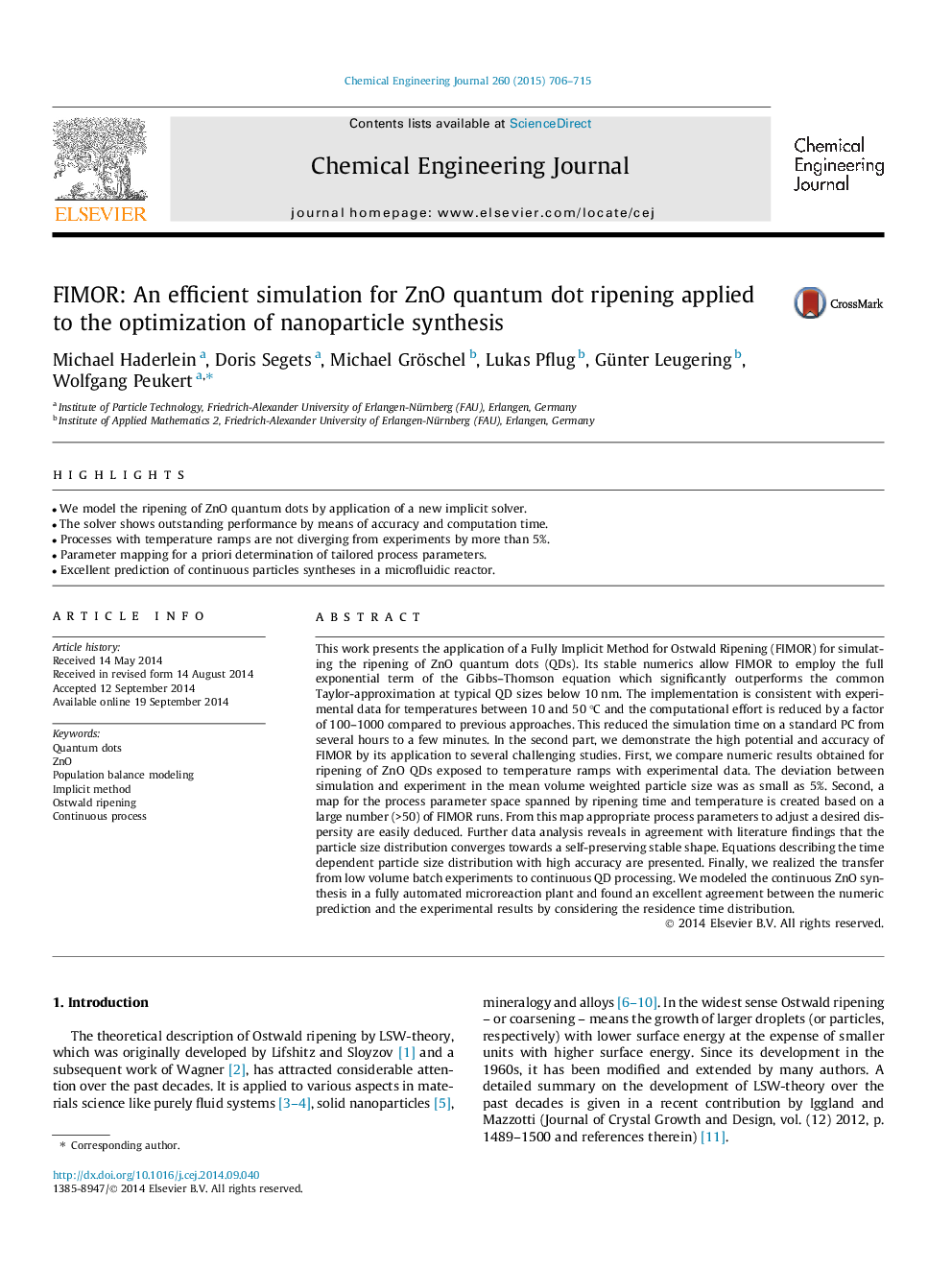| کد مقاله | کد نشریه | سال انتشار | مقاله انگلیسی | نسخه تمام متن |
|---|---|---|---|---|
| 146817 | 456378 | 2015 | 10 صفحه PDF | دانلود رایگان |

• We model the ripening of ZnO quantum dots by application of a new implicit solver.
• The solver shows outstanding performance by means of accuracy and computation time.
• Processes with temperature ramps are not diverging from experiments by more than 5%.
• Parameter mapping for a priori determination of tailored process parameters.
• Excellent prediction of continuous particles syntheses in a microfluidic reactor.
This work presents the application of a Fully Implicit Method for Ostwald Ripening (FIMOR) for simulating the ripening of ZnO quantum dots (QDs). Its stable numerics allow FIMOR to employ the full exponential term of the Gibbs–Thomson equation which significantly outperforms the common Taylor-approximation at typical QD sizes below 10 nm. The implementation is consistent with experimental data for temperatures between 10 and 50 °C and the computational effort is reduced by a factor of 100–1000 compared to previous approaches. This reduced the simulation time on a standard PC from several hours to a few minutes. In the second part, we demonstrate the high potential and accuracy of FIMOR by its application to several challenging studies. First, we compare numeric results obtained for ripening of ZnO QDs exposed to temperature ramps with experimental data. The deviation between simulation and experiment in the mean volume weighted particle size was as small as 5%. Second, a map for the process parameter space spanned by ripening time and temperature is created based on a large number (>50) of FIMOR runs. From this map appropriate process parameters to adjust a desired dispersity are easily deduced. Further data analysis reveals in agreement with literature findings that the particle size distribution converges towards a self-preserving stable shape. Equations describing the time dependent particle size distribution with high accuracy are presented. Finally, we realized the transfer from low volume batch experiments to continuous QD processing. We modeled the continuous ZnO synthesis in a fully automated microreaction plant and found an excellent agreement between the numeric prediction and the experimental results by considering the residence time distribution.
Journal: Chemical Engineering Journal - Volume 260, 15 January 2015, Pages 706–715